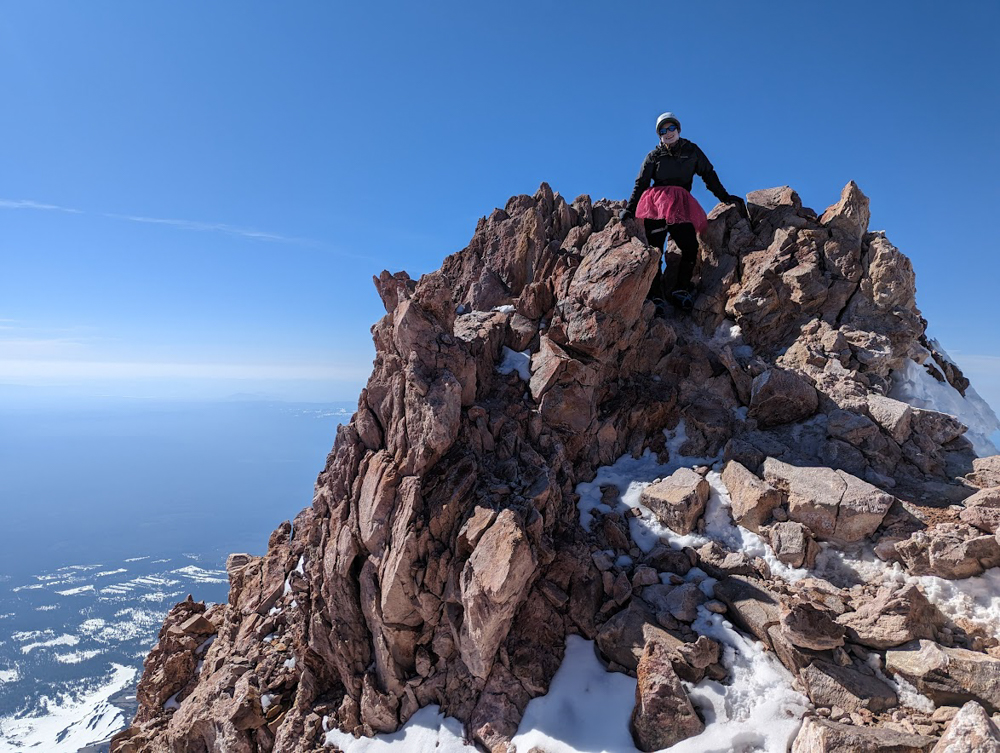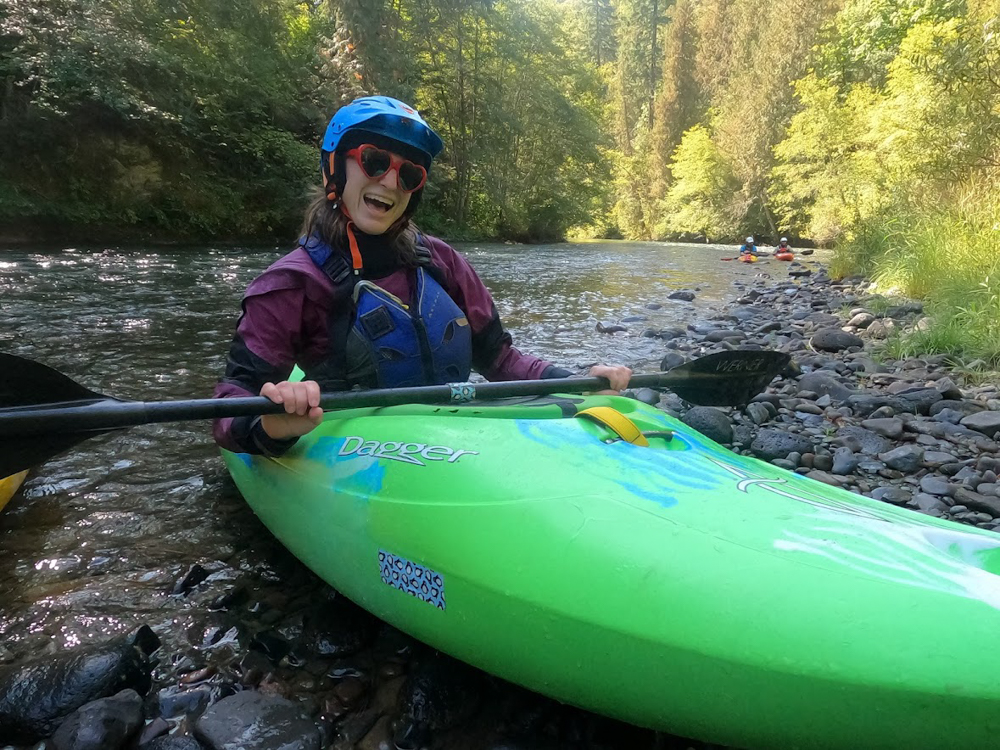Fifty percent of the population will experience menstrual cycles in their lives. If you love spending time outdoors, chances are you’ll get your period on an adventure at some point.
So, what are your options for menstrual products, and how can you be mindful of their impact on the environment?
Each kind of menstrual product comes with its own pros and cons when using it in the backcountry, and every person will have their own experiences and preferences. You might experiment with a few methods before finding your favorite backcountry period set-up– but you can start by learning your options right here!

Available Products for Mensuration on Outdoor Adventures
Period Panties
These are underwear created to absorb several pads’ or tampons’ worth of blood. You can wear them in place of your usual underwear while bleeding. There are different absorbency levels; some pairs are for lighter flow, and some are for heavier flow.
| Pros | Cons |
| Many styles: Whether you like high or low cut, more or less coverage, certain colors or different thickness, you’ll very likely find a pair you’re comfortable in, even while hiking or outdoors. Environmentally sustainable: No waste if you simply wash them and reuse as designed. High absorbency: You can usually wear a pair for far longer than you’d keep in a single tampon or use a single pad. | Less watersport friendly: Just like you wouldn’t love to sit in a boat or swim with a pad, you probably wouldn’t enjoy getting your underwear sopping wet. Can’t wash on expeditions: At home, you can throw these in the washing machine. It’s harder to get them fully clean (or dry) in the backcountry. You could try washing in a drybag Heavier: Several panties weigh more than a single cup or a few tampons. Plus, if you’re packing out worn underwear, you’ll want to keep them in a separate, sealable, waterproof baggie until you can get home to clean them. |
Tampons
Made with absorbent material, tampons are designed to be inserted into the vaginal with an applicator or with clean fingers. Many menstruators already feel comfortable using them at home, making them a common choice, even in the outdoors.
| Pros | Cons |
| No extra cleaning needed: Clean hands and disposal are necessary, but you don’t need to clean the tampons after use like you would panties or a cup. This makes them a convenient choice for trips where it’s difficult to bring more supplies. Easy to pack: Before heading out, you can simply store all your unused tampons in a clean baggie. Plus, you probably know how many you need to bring, so no need to overpack. Simple disposal: Simply use a separate trash baggie for dirty tampons and applicators (you can cover it with duct tape if you don’t want to see inside). | High waste: No way around it– tampons and their applicators have an impact on the environment. Mosty menstruators use a handful of tampons throughout one menstrual cycle, which can add up to a lot over time. Plus, you have to be mindful of disposal (no tampons in toilets, pit/vault toilets or catholes in the ground, for example). They make reusable applicators if you want to cut down on trash. Dirty fingers: Many outdoor adventures lead to dirty hands. Since tampons are inserted into your body, you need to make sure your hands are very clean before you use one or take one out. Chafing: The string from tampons can give some users chafing from rubbing on the skin. You can try lube or stringless tampons if this happens to you. |


Menstrual Cups or Discs
Another popular choice for outdoor enthusiasts, cups and discs are inserted through the vaginal canal to sit below the cervix. Since they’re different shapes, they fit a bit differently, but both discs and cups are made of flexible material and collect blood into a vessel that needs to be emptied after a certain amount of time.
| Pros | Cons |
| Eco-friendly: Reusable discs and menstrual cups can often be used for many years, cutting down on product waste. Plus, you don’t need to throw anything away after use! Some discs are meant to be one-time use disposables; look for reusable discs if you want to be mindful of waste. Disposables will need to be stored and packed out like tampons. No chafing: Many menstruators find cups and discs more comfortable than tampons and pads, since tampon strings and pads can rub and chafe, and since tampons can feel dry and scratchy to some people. There are plenty of different cup shapes and materials to choose from, so many people report not noticing any sensation when they’re in use. Lightweight: You can’t get much lighter if you’re considering pack weight in the outdoors. A menstrual cup or disc is compact, flexible, and just a couple ounces. | Takes practice: If you’ve never used a cup or disc before, get familiar with it before heading into the backcountry. It takes some getting used to in order to find the right fit and placement. Need to dispose of blood: Be mindful of where you’re emptying your cup. Typically, you can dump a full cup in the same places you’d poop in the outdoors: a pit toilet, river toilet or cathole. Just make sure you’re following Leave No Trace principles. Need to clean: Cleaning your cup after use or between uses can be trickier in the backcountry if you don’t have clean, running water. Thankfully, they have products to help: Search for “menstrual cup portable cleaner”. |
Pads
Pads are similar to period panties, except they attach to your underwear and can be replaced without changing underwear. There are both disposable and reusable options.
| Pros | Cons |
| Obvious timing: Since you can see the product throughout use (unlike cups, discs or tampons), it’s clear when you need to switch to a new pad. Reusable types are eco-friendly: Cut down on trash by opting for reusable, washable pads. These fit the same as disposable pads, but are softer material and can be put in the washing machine when you get home. Overnight protection: Many people find that pads are a good choice for overnight, since they can be easier to change in the dark if needed, and the coverage can protect you more against leaks while lying down in a tent. | Chafing: The rougher material of disposable pads can rub harshly on your skin, and reusable pads can have a similar effect. Lube can help if you experience this. Not water-friendly: Swimming and boating adventures can make using pads trickier, since you don’t want them sopping wet as you explore. Waste: Disposable pads are still more common than reusable options, so waste builds up. You also have to dispose of them safely like tampons: Don’t dump them in toilets or catholes, and keep them separate from anything clean. |

Common questions about menstrual periods on outdoor adventures:
What other supplies do you need when managing menstrual periods outdoors?
No matter the method you choose, craft a clean-up kit to ensure you have clean hands and fingers when changing or in between uses. If you can’t thoroughly wash your hands, you can bring a pack of wet wipes to help. It creates more waste, but packing plastic gloves in a pinch can help if your hands are soiled and you need to change an internal method right away. Throw a mini squeeze bottle of soap in there, while you’re at it!
Can bears smell my period or products?
There is no evidence that shows bears are attracted to menstrual fluid. Of course, you still want to “leave no trace” by treating menstrual products as smellable items. When in bear country, store anything that has a potential scent in a bear-proof hang or container, including toothpaste, lip balm, food, dog treats, and menstrual supplies.
But what’s the best option for period products in the wild?
It truly depends on the menstruator, the activity and comfort level! Some menstruators don’t like internal methods while others don’t like external. Some have never tried period panties before, and others swear by them. You might switch methods depending on the planned trip. No matter what, planning and packing falls in the “Plan Ahead and Prepare” principle of Leave No Trace, so think ahead and pack with the environment in mind.
There’s no shame in getting periods outdoors. As you explore nature, remind yourself that your body is a beautiful part of nature, too– and half the other adventurers out there know what you’re experiencing.
Removing the stigma around menstrual cycles is just one way we can empower girls+ and women+ in the outdoors and reduce barriers to adventure.

How can you help the mission?
There are many ways to help support our mission! The most direct was is to make a donation, either to an ambassador’s campaign, or directly to The Cairn Project. Find a list of active campaigns here and donate to one that resonates with you, or donate directly to The Cairn Project here.
You can also become an ambassador yourself! Do you have an adventure coming up you’d like to turn into an adventure fundraiser? Do you have no idea how to even start planning an adventure? We’re here to help! Go here for more info on becoming an ambassador and sign up for our newsletter for tips and tricks about how to get started. In fact, our newsletter is a great place to start to learn more about The Cairn Project!

Angie Marie
Angie is an author, speaker, and recreational mountain athlete who's fascinated by the intersection of adventure and womanhood.
In 2022, she completed an Adventure Fundraiser for The Cairn Project during which she climbed five Cascade Volcanoes in Oregon and Washington, including Mt. Rainier.
Angie lives in the Columbia River Gorge, where she enjoys ultrarunning, mountaineering, and, recently, learning to whitewater kayak. Find her work at itsangiemarie.com or say hi at instagram.com/angvswild.
